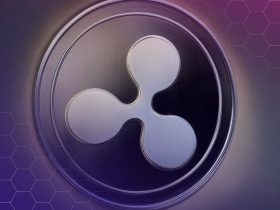In response to criticism, the Ethereum community has come together to support co-founder Vitalik Buterin’s ideas for Layer 2 (L2) solutions.

In the face of mounting criticism, the Ethereum community has recently defended Vitalik Buterin’s concept for Layer 2 (L2) solutions. Critics have asserted that L2s deviated from the original roadmap and were not in line with Ethereum’s guiding principles.
In response, Offchain Labs co-founder Steven Goldfeder took to social media to refute these claims by revisiting Buterin’s 2020 rollup-centric roadmap.
A rollup-centric ethereum roadmap:https://t.co/11vxsD0XsJ
— vitalik.eth (@VitalikButerin) October 2, 2020
Misalignment or Misunderstanding? Vitalik’s 2020 Roadmap
Concerns that these scaling solutions are straying from the larger Ethereum vision have stoked a heated debate about L2s and their place in the ecosystem.
The three main criticisms of L2s that Goldfeder addressed were that they are not really Ethereum because they are in competition with one another, that L2 tokens, fee collection, and MEV (Maximum Extractable Value) are not in line with Ethereum’s core values, and that L2s should not support DeFi (decentralized finance) projects, which some argue belong on Ethereum’s mainnet.
Claim 1: L2s aren't Ethereum because they compete with one another. Since Arbitrum is not Base, they cannot both be Ethereum.
— Steven Goldfeder (@sgoldfed) September 10, 2024
Wrong! To quote Vitalik, it's okay (actually good!) for Ethereum to consist of several "islands" that are unique yet still part of a greater Ethereum pic.twitter.com/pps266T2EK
The first rebuttal by Goldfeder addressed the argument that L2s, like Arbitrum and Base, function as separate entities and hence cannot be regarded as a part of Ethereum. This rivalry between L2s, according to critics, implies fragmentation rather than unity.
Goldfeder, however, disproved this by pointing out Buterin’s own statements from the 2020 roadmap, in which he defined Ethereum as a group of “islands” that are distinct but connected.
This metaphor validates the idea that having multiple L2s within Ethereum is not only acceptable but advantageous, with each L2 providing a unique contribution to the overall scalability and robustness of the network.
The argument that L2 tokens and revenue models like fee and MEV collection go against Ethereum’s core principles was Goldfeder’s next area of emphasis.
Those arguing that L2s have become misaligned clearly haven't read @VitalikButerin's Rollup centric roadmap from 2020.
— Steven Goldfeder (@sgoldfed) September 10, 2024
The roadmap predates any mainnet L2 and we're remarkably on course.
Here are three quotes which directly refute some of the most bizarre claims 🧵
He cited Buterin’s clear mention of these features in the 2020 roadmap as evidence that they were deliberate additions to Ethereum’s developing ecosystem rather than afterthoughts.
He explained that Buterin wanted to create an ecosystem that would support L2s and still be in line with Ethereum’s larger economic framework.
Finally, Goldfeder stated that L2s should steer clear of DeFi projects, which some argue should only be allowed on the Ethereum mainnet in order to maintain the project’s integrity.
Those arguing that L2s have become misaligned clearly haven't read @VitalikButerin's Rollup centric roadmap from 2020.
— Steven Goldfeder (@sgoldfed) September 10, 2024
The roadmap predates any mainnet L2 and we're remarkably on course.
Here are three quotes which directly refute some of the most bizarre claims 🧵
Bringing up Buterin’s early vision once more, Goldfeder pointed out that DeFi was specifically mentioned as an anticipated early adopter of L2 technology.
L2s supporting DeFi were never meant to be misaligned; rather, they were meant to be a major force behind Ethereum’s progress toward more scalable, effective transaction processing.
Community Engagement: Majority Agreement?
Many bystanders responded to Goldfeder’s thread, which rapidly spurred a wider conversation within the Ethereum community.
A user asked whether it would ever be possible to create new applications within pre-existing systems, much like how one might develop on L2s in Ethereum.
VirtualBox, a program that runs several operating systems on a single computer, was mentioned by Goldfeder.
Those arguing that L2s have become misaligned clearly haven't read @VitalikButerin's Rollup centric roadmap from 2020.
— Steven Goldfeder (@sgoldfed) September 10, 2024
The roadmap predates any mainnet L2 and we're remarkably on course.
Here are three quotes which directly refute some of the most bizarre claims 🧵
Vitalik himself entered the layer 2 discourse, equating contemporary operating systems and web browsers. He pointed out that the majority of programs nowadays operate inside of browsers, serving as miniature operating systems.
This comparison strengthened the claim that Ethereum’s L2s are expanding, not decreasing, the ecosystem’s ability to accommodate a wide range of intricate applications.















Leave a Reply